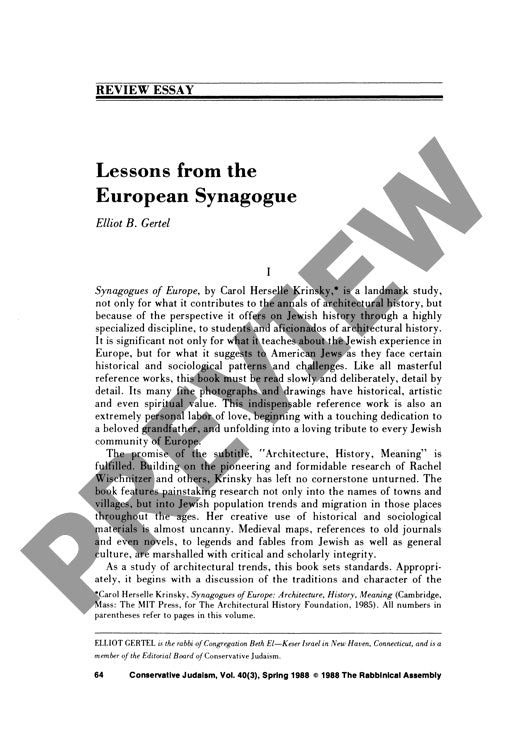Lessons from the European Synagogue Revi
Couldn't load pickup availability
For centuries, European synagogues have served as architectural barometers of Jewish life, reflecting both persecution and cultural flowering through their designs. Carol Herselle Krinsky's landmark study "Synagogues of Europe: Architecture, History, Meaning" reveals how Jewish communities navigated the complex tension between assimilation and distinctiveness through their architectural choices. Drawing from medieval maps, journals, novels, and cultural materials, Krinsky traces synagogue development from ancient Middle Eastern origins through twentieth-century modernist designs across European communities. Her comprehensive architectural analysis, combined with historical and sociological research, illuminates how external pressures from Christian and governmental authorities shaped synagogue design, while internal Jewish debates over ritual, reform movements, and community identity drove architectural innovation. The research uncovers broader sociological patterns, including gender roles, tensions between established and immigrant populations, and socio-economic dynamics within Jewish communities. Beyond documenting the Holocaust's devastating impact on European synagogues and subsequent preservation efforts, Krinsky's findings offer valuable insights for contemporary American Jewish communities facing similar challenges of unity, identity, and institutional development. Her interdisciplinary approach, merging architectural analysis with cultural history, establishes new standards for scholarship in both architectural history and Jewish studies.

More Information
-
Physical Description
-
Publication Information
Published 1988
ISBN
-
Publication Credits
Elliot Gertel

